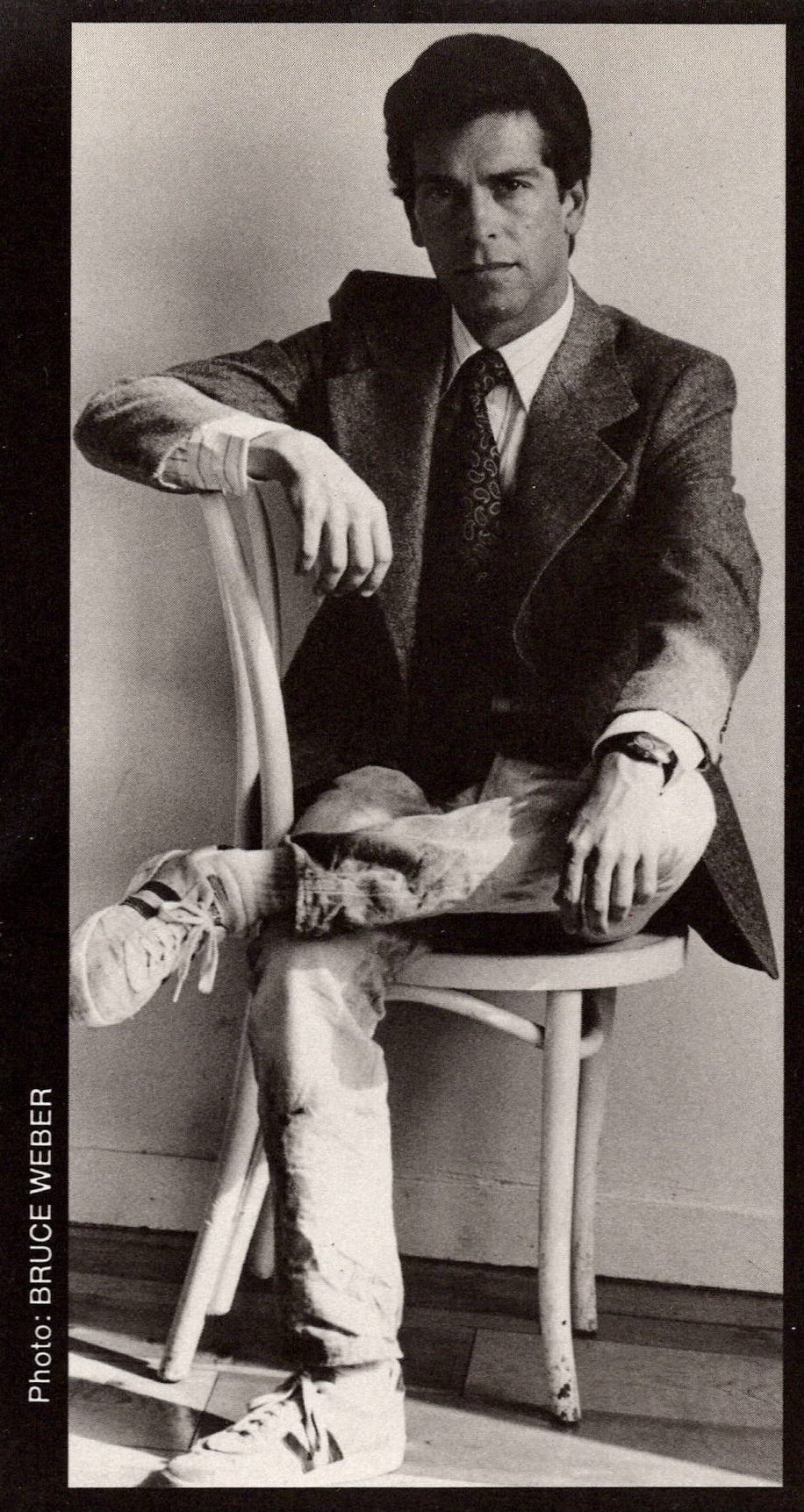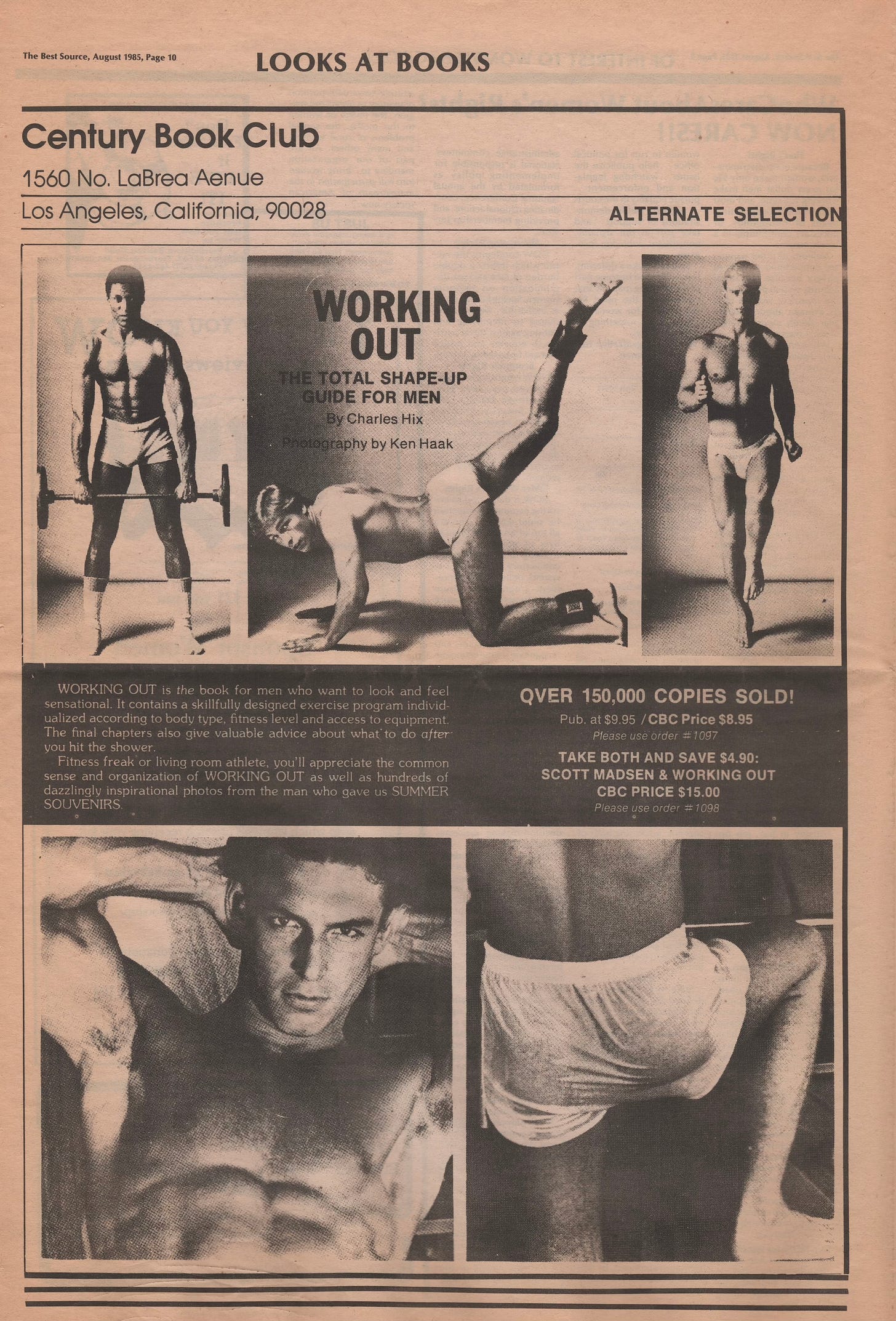Working Out Our Gay Fantasies
How Charles Hix & Ken Haak pumped up queer desire
November 14, 2025
Where were you when Working Out by Charles Hix with photography by Ken Haak was published?
I ask it that way because I think for gay men who were kids or teens in 1983, that and similar — you should pardon the expression — trade books, like its precursor Looking Good (1977) and the more openly libidinous Boy Crazy by Karen Hardy (1984), were beacons of beefcake prior to the influx of mainstream male appreciation.
The book was ostensibly a guide for men looking to have supermodel bodies, subtitled The Total Shape-Up Guide for Men, but Haak’s sensual black-and-white photography owed more to the closety physique mags of the ‘40s, ‘50s and ‘60s than to fitness. I believe it was late MuscleMag publisher Robert Kennedy (the other one) who once identified how some fitness magazines seemed gay because of a subtle perception that the models were “seducible” — by men; this is what Haak’s photography, like Bruce Weber’s before him, exuded.
Imagine a 228-page book — hardcover! — pitched to men looking to get fit. Not very handy, right? That’s probably why the audience was more gay men, cherishing it as a coffee-table book of the greatest male beauties of the age. It was like a legit version of Playgirl you could buy at your local B. Dalton Bookseller without feeling the staff knew exactly what you were.
It makes sense that the book felt like a gay bible — Hix, like Haak, was gay and was well-known in the gay community from the ‘70s. Here, in 1977, he chats on The Emerald City, a gay public-access show about Looking Good:, a book he was hired to write based on his past freelance work:
Interestingly, Hix was known for his writing in Esquire and GQ, both of which (especially the latter) had a gay element at the time.




